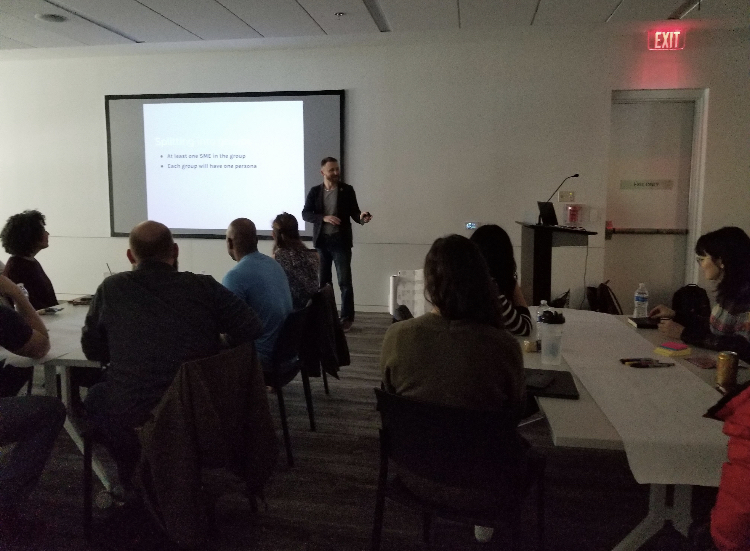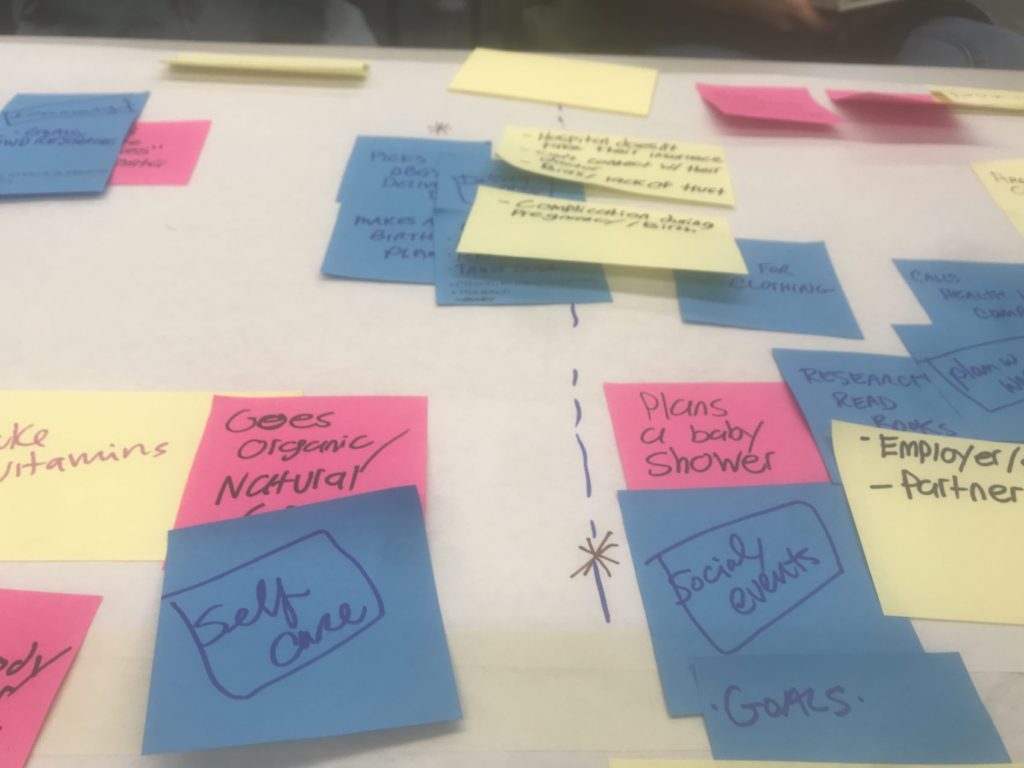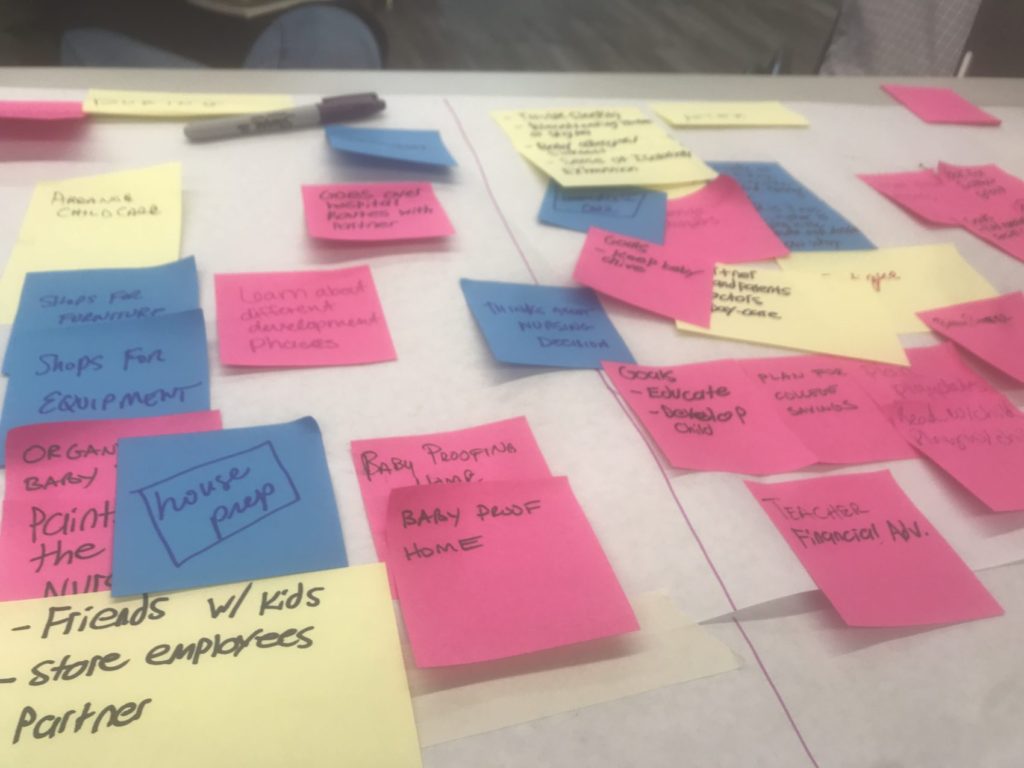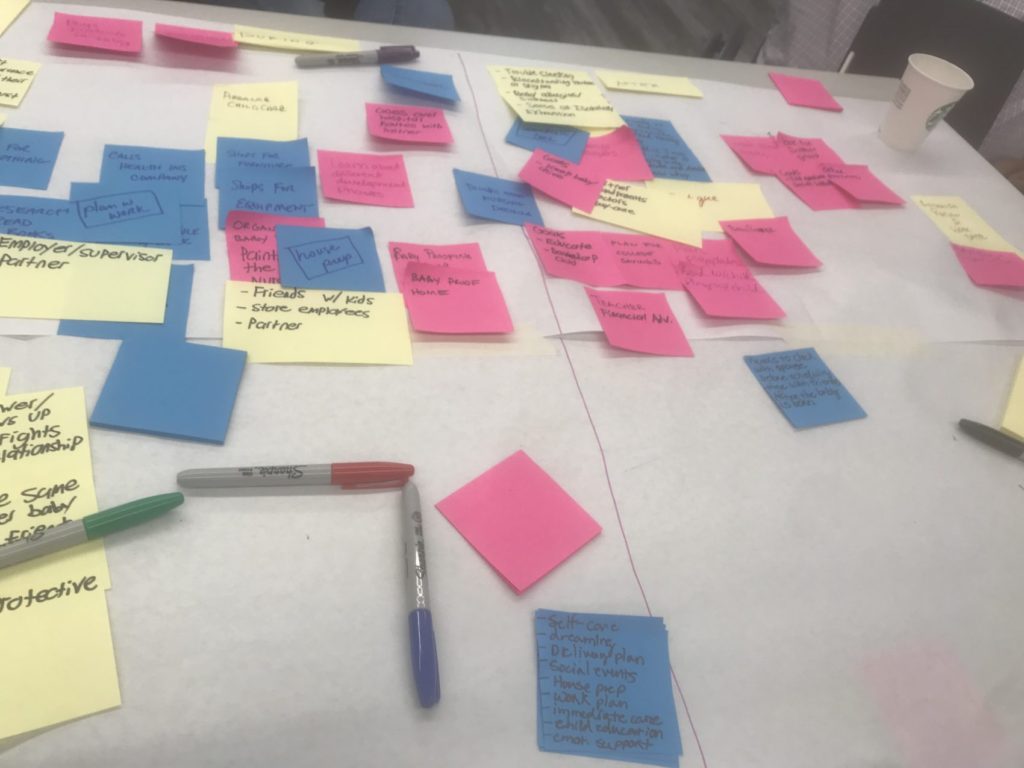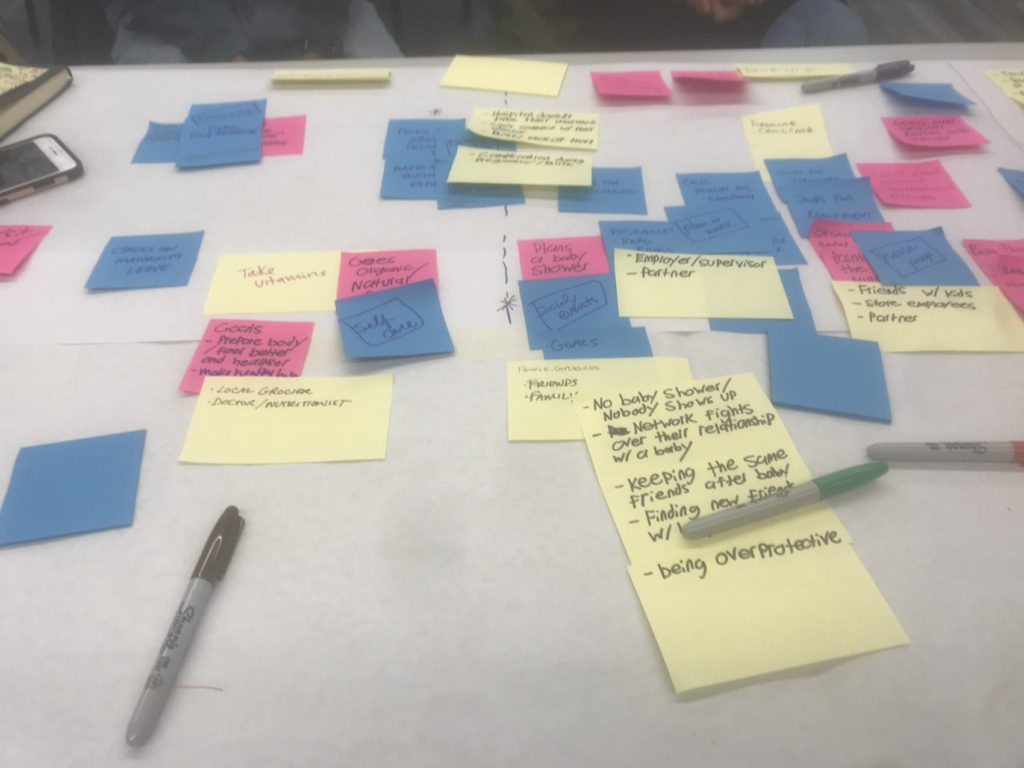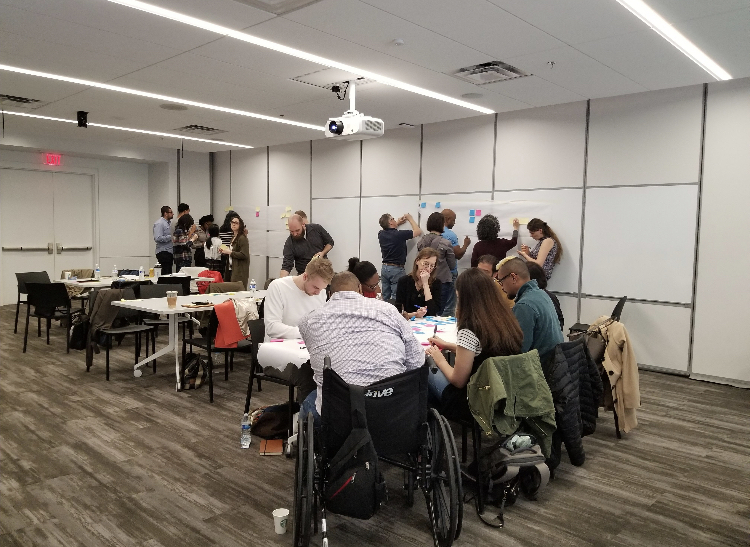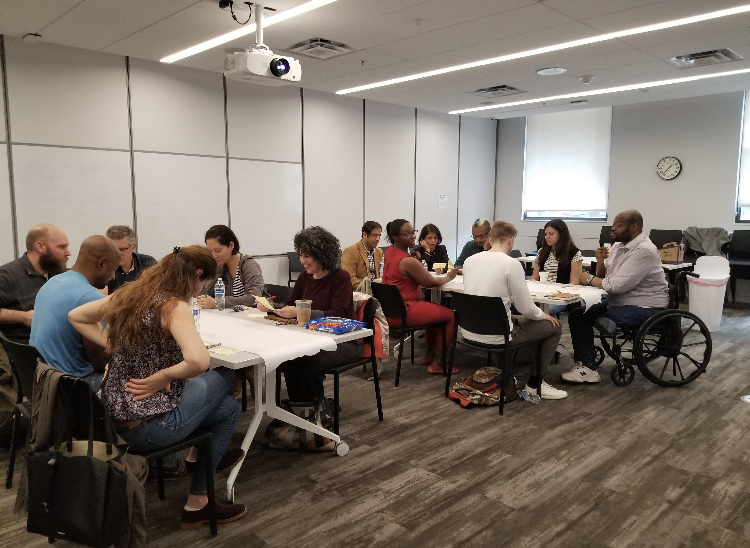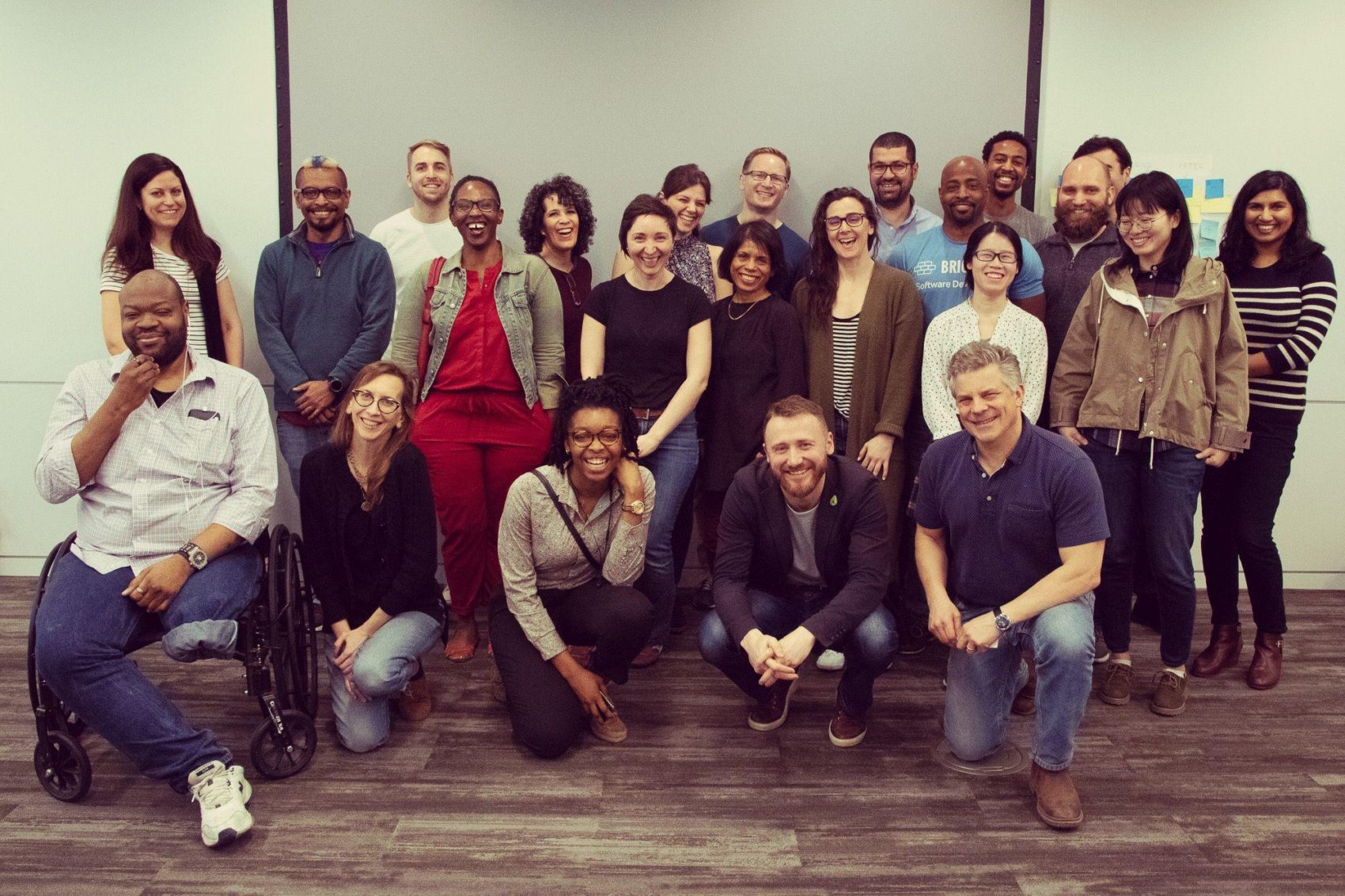
May
Customer Journey Mapping Done Right
Last month I published an essay about my experience at my first service jam. Those of you who read it know that it wasn’t the most positive experience. In light of that, I want to briefly share with you all another session I attended earlier that month on customer journey mapping. That experience was much more positive and productive, so I wanted to share it with my readers.
UXPressia at the Cleveland Park Public Library hosted a workshop learning how to develop empathy and compassion around personas, how to recognize and eliminate pain points.
Our project focused on the mental health and wellbeing of mothers, fathers, and friends. We were broken up into three groups with each one focused on each. The highest concern the medical profession has for new mothers is postpartum-depression. While two other groups focused on fathers and friends, our group focused on mothers.
We developed some great insights such as the sense of isolation a mother can experience after childbirth, especially if she is perceived by her social circle as a highly-organized person. Another insight was racial and language bias within the medical field when a new mother is looking for their OBG-YN or deciding their birthing plan.
One of the biggest behavioral mindsets I see teams struggle with is learning how to work together. Whether it is a team that has been working together for years or a team that just met one another a few minutes ago, trusting one another to share insights is a challenge. Add to that a layer of learning a collaboration tool or methodology and it is ripe for dysfunction and chaos. Our group experienced some of those challenges. some of us were more linear thinkers, while others were more nonlinear. Some were more comfortable associating positive experiences of motherhood while others felt more comfortable expressing negative experiences.
In the end, it all comes down to trust and understanding. If we make a good faith effort to trust that we’re all bringing our best selves to the table, we are more apt to understand one another.
This was a great physical exercise. When you get the foundations of customer journey mapping in your head and hands, it’s much easier to jump onto UXPressia’s digital tools and make your maps come to life (and shoutouts to the brilliant marketing!)
I picked up some excellent facilitation techniques, such as doodling at the start of the meeting, take a break before heading into the problem areas, clapping to get everyone’s attention between sessions, and using mind mapping to find gaps in insights.
I volunteered to present our journey map, and got a great response! This is a new phase for me as a design thinker, leader, creative, and strategist. Unlike graphic design which can be practiced in solitude, UX requires practice with others. We can’t get better if we don’t work together.



